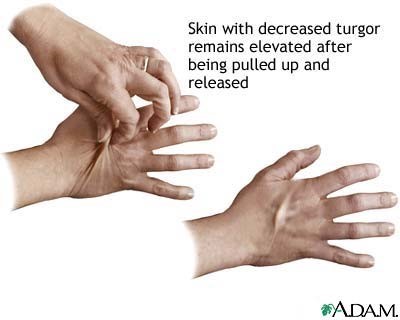A nurse is assessing the radial pulse of a patient. The nurse would describe the pulse as brisk and would document this finding as a +2. What is the nurse's documentation describing?
Pulse rhythm
Pulse deficit
C. Pulse amplitude
Pulse arrhythmia
The Correct Answer is C
The correct answer is choice C, Pulse amplitude. Pulse amplitude is a measure of the strength of the pulse and is rated on a 0-4 scale, with 0 indicating no pulse and 4 indicating a bounding pulse. A brisk pulse with a +2 rating suggests a normal pulse strength that is easily felt and is not weak or bounding. Pulse rhythm describes the regularity or irregularity of the pulse beats and is not related to pulse strength. Pulse deficit refers to the difference between the apical and radial pulse rates and is determined by auscultating the apical pulse while simultaneously palpating the radial pulse. Pulse arrhythmia refers to an irregular pulse rhythm.
Nursing Test Bank
Naxlex Comprehensive Predictor Exams
Related Questions
Correct Answer is C
Explanation
The correct answer is choice C: Skin fold returns to its usual shape quickly when released. When assessing skin turgor, the nurse is checking for the elasticity and hydration of the skin. In a normal assessment, when the skin fold is lifted or pinched, it should return to its usual shape quickly when released. This indicates good skin turgor, which is an indication of proper hydration. If the skin fold is difficult to lift or pinch (choice A), this indicates poor skin turgor and possible dehydration. If an indentation of 2 mm remains after releasing the skin fold (choice B), this indicates poor skin turgor and possible dehydration. If the skin fold returns to its usual shape slowly when released (choice D), this may indicate a decrease in skin elasticity and possible dehydration.

Correct Answer is C
Explanation
The correct answer is choice C, face. When beginning a complete bed bath, the nurse should first wash the client's face, followed by the arms, chest, abdomen, legs, perineal area, back, and then feet. Washing the face first is important to promote client comfort and hygiene, and also sets a positive tone for the rest of the bath. Additionally, washing the face before the perineal area helps to prevent cross-contamination of bacteria from the perineal area to the face.
Whether you are a student looking to ace your exams or a practicing nurse seeking to enhance your expertise , our nursing education contents will empower you with the confidence and competence to make a difference in the lives of patients and become a respected leader in the healthcare field.
Visit Naxlex, invest in your future and unlock endless possibilities with our unparalleled nursing education contents today
Report Wrong Answer on the Current Question
Do you disagree with the answer? If yes, what is your expected answer? Explain.
Kindly be descriptive with the issue you are facing.
